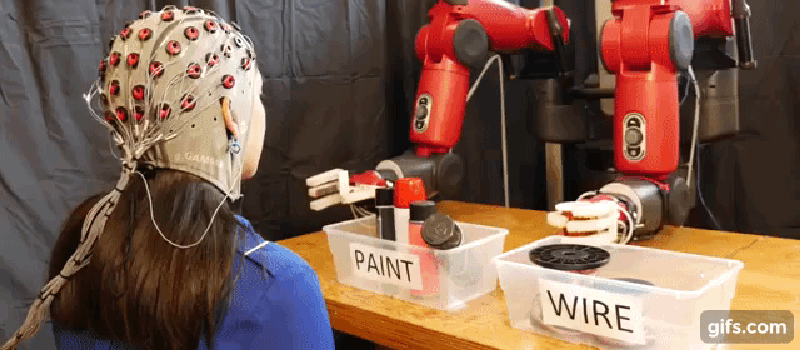Training machines to effectively complete tasks is an ongoing area of research. This can be done in a variety of ways, from complex programming interfaces, to systems that understand commands in natural langauge. A team from MIT’s Computer Science and Artificial Intelligence Laboratory (CSAIL) wanted to see if it was possible for humans to communicate more directly when training a robot. Their system allows a user to correct a robot’s actions using only their brain.
The concept is simple – using an EEG cap to detect brainwaves, the system measures a special type of brain signals called “error-related potentials”. Simply noticing the robot making a mistake allows the robot to correct itself, and for a nice extra touch – blush in embarassment.
This interface allows for a very intuitive way of working with a robot – upon noticing a mistake, the robot is able to automatically stop or correct its behaviour. Currently the system is only capable of being used for very simple tasks – the video shows the robot sorting objects of two types into corresponding bins. The robot knows that if the human has detected an error, it must simply place the object in the other bin. Further research seeks to expand the possibilities of using this automatic brainwave feedback to train robots for more complex tasks. You can read the research paper here.
MIT’s CSAIL work on lots of exciting projects – their video microphone technology is truly astounding.
[Thanks to Adam Connor-Simmons for the tip!]
















This reminds me of that horse that was supposed to be able to solve math problems but really only noticed involuntary cues from others present that gave him the answer
Yes, but when this robot screws up for the last time, the glue they make out of it isn’t going to be very good.
Excellent concept though. I know that the machines I work on inherently know when they are screwing up, and continue to do so because they can tell it is driving me mad.
Could this also be used as an interrogation tool?
Maybe by the interviewer making either statements where mistakes lead to obvious answers such as “The first letter of my password is a vowel.” or “My contact is called David.” while the interviewee is wearing this sensor rig.